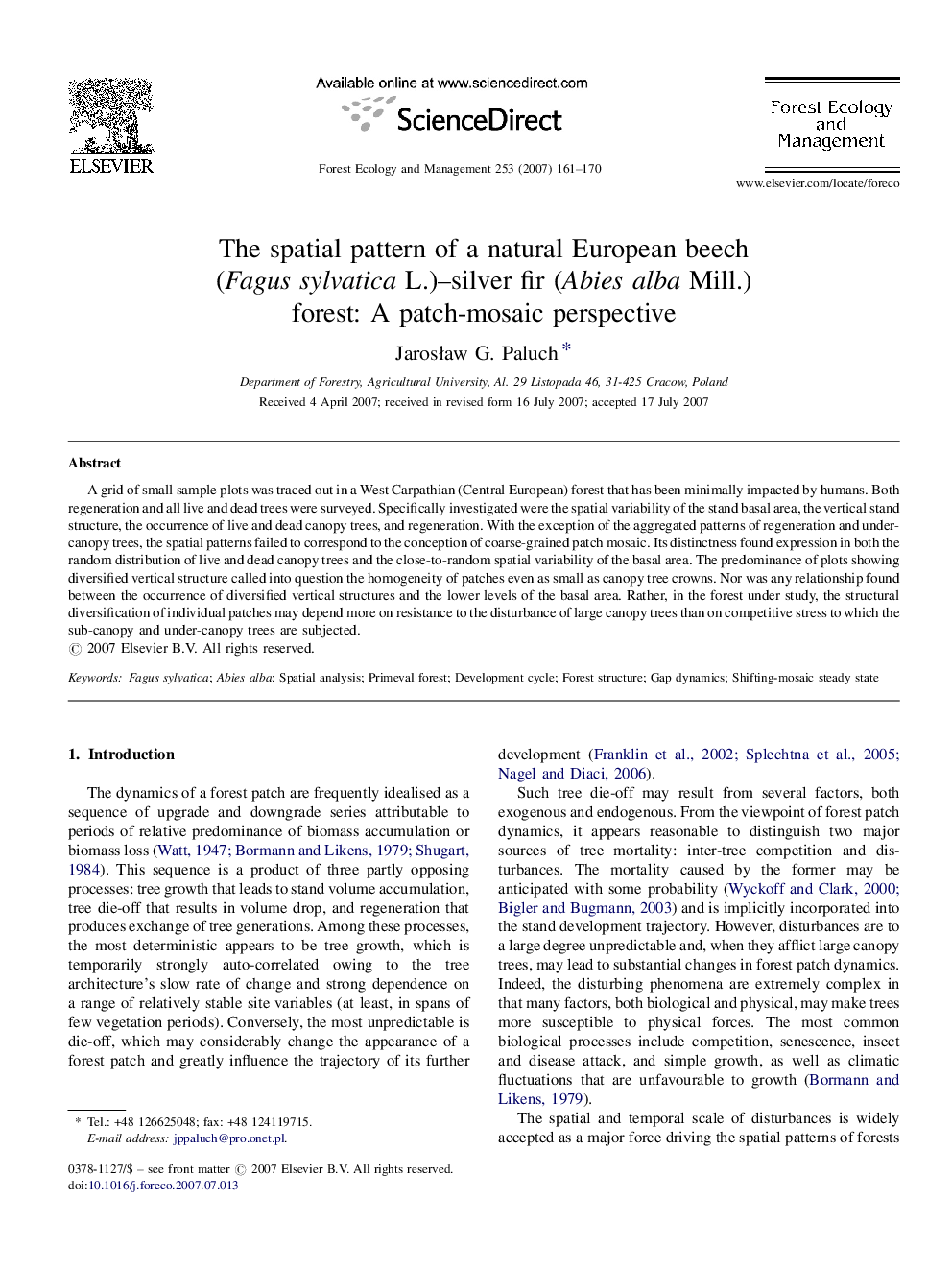| Article ID | Journal | Published Year | Pages | File Type |
|---|---|---|---|---|
| 89747 | Forest Ecology and Management | 2007 | 10 Pages |
A grid of small sample plots was traced out in a West Carpathian (Central European) forest that has been minimally impacted by humans. Both regeneration and all live and dead trees were surveyed. Specifically investigated were the spatial variability of the stand basal area, the vertical stand structure, the occurrence of live and dead canopy trees, and regeneration. With the exception of the aggregated patterns of regeneration and under-canopy trees, the spatial patterns failed to correspond to the conception of coarse-grained patch mosaic. Its distinctness found expression in both the random distribution of live and dead canopy trees and the close-to-random spatial variability of the basal area. The predominance of plots showing diversified vertical structure called into question the homogeneity of patches even as small as canopy tree crowns. Nor was any relationship found between the occurrence of diversified vertical structures and the lower levels of the basal area. Rather, in the forest under study, the structural diversification of individual patches may depend more on resistance to the disturbance of large canopy trees than on competitive stress to which the sub-canopy and under-canopy trees are subjected.
